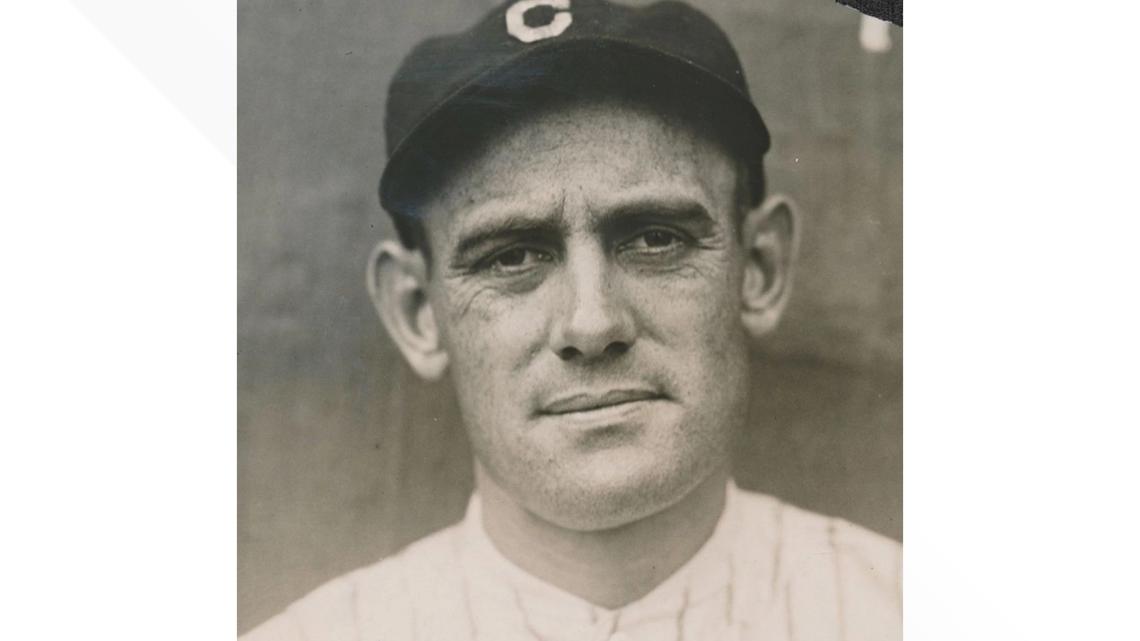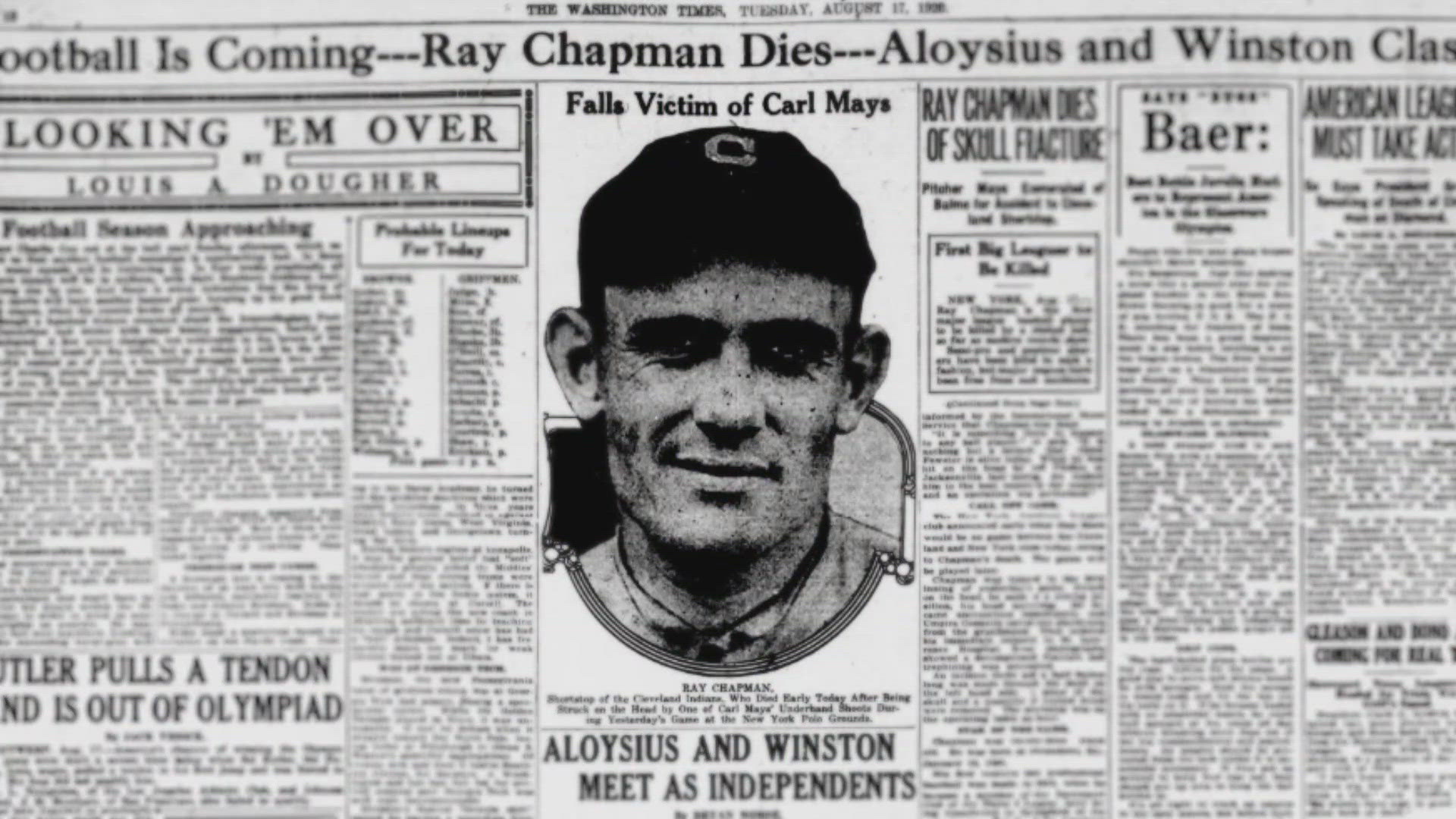CLEVELAND — In Major League Baseball, the game is played with a ball clean and white, free of cracks and blemishes, as clean as it came from the manufacturer. If it hits the ground, a new one is tossed in.
But it has not always been that way. Many decades ago, a major league ball could be ragged, scarred, and grimy.
It was that description of a baseball which led to a player's death, and it involved a Cleveland baseballer. More on that in a moment, but first, let's meet Scott Longert, a Cleveland baseball historian in love with the game.
The story he cannot let go of, and for good reason, is that of Cleveland Indians player Ray Chapman, who is the only major leaguer to die as a direct result of the game.
"He was regarded in his time as the best shortstop in the game," Longert said as we met up at League Park, which the ballclub called home until 1946.


It was 1920, and Cleveland was playing the Yankees at the Polo Grounds in New York.
"We had three games with the Yankees, and we'd been battling them on and off for first place," Longert explained, setting the scene. "It was overcast, drizzling a little bit. Wasn't the best day to play baseball, but still they had a big crowd — about 25,000 people at the Polo Grounds. And during the game, it got dark, or visibility wasn't good." scene.
Facing Chapman at bat, Yankees pitcher Carl Mays was on the mound.
"Carl was a submariner. He went all the way almost down to his feet. Some say it's "knuckle scraping the ground," and he delivered," Longert said of Mays' sidearm delivery. "A lot of times, the ball would rise, and he'll come in high. Mays also had a bad reputation as a headhunter, a guy who would throw at people's heads either to knock them down or to hit him, to send him a message like, 'You can't get too close to the plate on me,' or, 'You can't crowd the plate. 'I'm going to move you off or I'm going to hit you.'
"Chapman liked to crowd the plate, and was crowding it at the time."
But Mays didn't like the ball he held, believing it to be too dirty and worn. He asked the umpire for a new one.
"The ball was wet in addition to being dirty," Longert noted, adding that "there was a decree that went from the umpires: Don't throw out a game ball unless you absolutely have to."
In 1920, team owners complained baseballs cost too much, so they ordered no more than eight a game. Even foul balls hit in the stands had to be returned.
Denied a clean ball, Mays went into his windup with an old ball — dirty, scarred, with ragged stitches. With rain and darkened skies, visibility decreased, and the Indians' star shortstop faced the oncoming pitch.
"Mays threw a fastball inside that moved Chapman away, but the ball kept coming in," Longert said. "It kept breaking, but because of the shape of the ball, Ray never saw it."
Ray Chapman couldn't get out of the way of the ball breaking inside on him, and the fastball struck him in the head. He went down.
The ball fractured Chapman's skull. He was unconscious.
"Some people thought he was dead at home plate the way he went down, and he wasn't moving at all," Longert told us. "Somebody came out (of the stands) and used something to revive him."
As accounts go, Chapman did regain consciousness long enough to walk with assistance for a few steps, until he collapsed again.
"He couldn't walk," Longert said. "They had to carry him the rest of the way to the clubhouse, and obviously, he was near death at the time."
Chapman was eventually taken to St. Lawrence Hospital, a short distance away from the Polo Fields. Doctors performed surgery on his fractured skull.
He survived the surgery and was stable for several hours, until his blood pressure began to fall. He died early the next morning, too late for the morning paper.
Ray Chapman was 29 years old.
"Word didn't really get out until the afternoon newspapers and later about what had happened to him," Longert admitted. "You know, the only player to die as a direct result of an injury in a major league game. It's never happened since," Longert said.
Chapman's death stunned the sports world, and especially Cleveland, he and wife Katie were the darlings of society. She was wealthy the daughter of a business leader, and Ray had charisma and style.
"They were the power couple of Cleveland," Longert said.
A short drive from League Park, you'll find Chapman's grave in a shady, quiet section of Lake View Cemetery. Other famous names such as Rockefeller, Garfield, and Ness are buried nearby, but it is Chapman's grave that attracts much of the attention.
Since 1920, items of baseball have appeared at his gravesite. The cemetery does not remove anything, allowing items to remain. Eventually, nature claims them, but these are tributes to the memory of the only major leaguer to die as a direct result of the game.
Over the generations, baseball has changed. Decades after Chapman's tragedy, batting helmets entered the game, and the balls themselves are removed from play regularly, always replaced with clean, new balls that can be better seen by batters as opposed to the dirty, ragged ones like the sphere Ray Chapman did not see coming.
Scott Longert's book, "Love and Loss: The Short Life of Ray Chapman," will be available in July.
The Baseball Heritage Museum at League Park also has much more on Chapman's, as well as other pivotal moments in the sport, and you can visit Wednesdays through Sundays from 9 a.m.-3 p.m.

